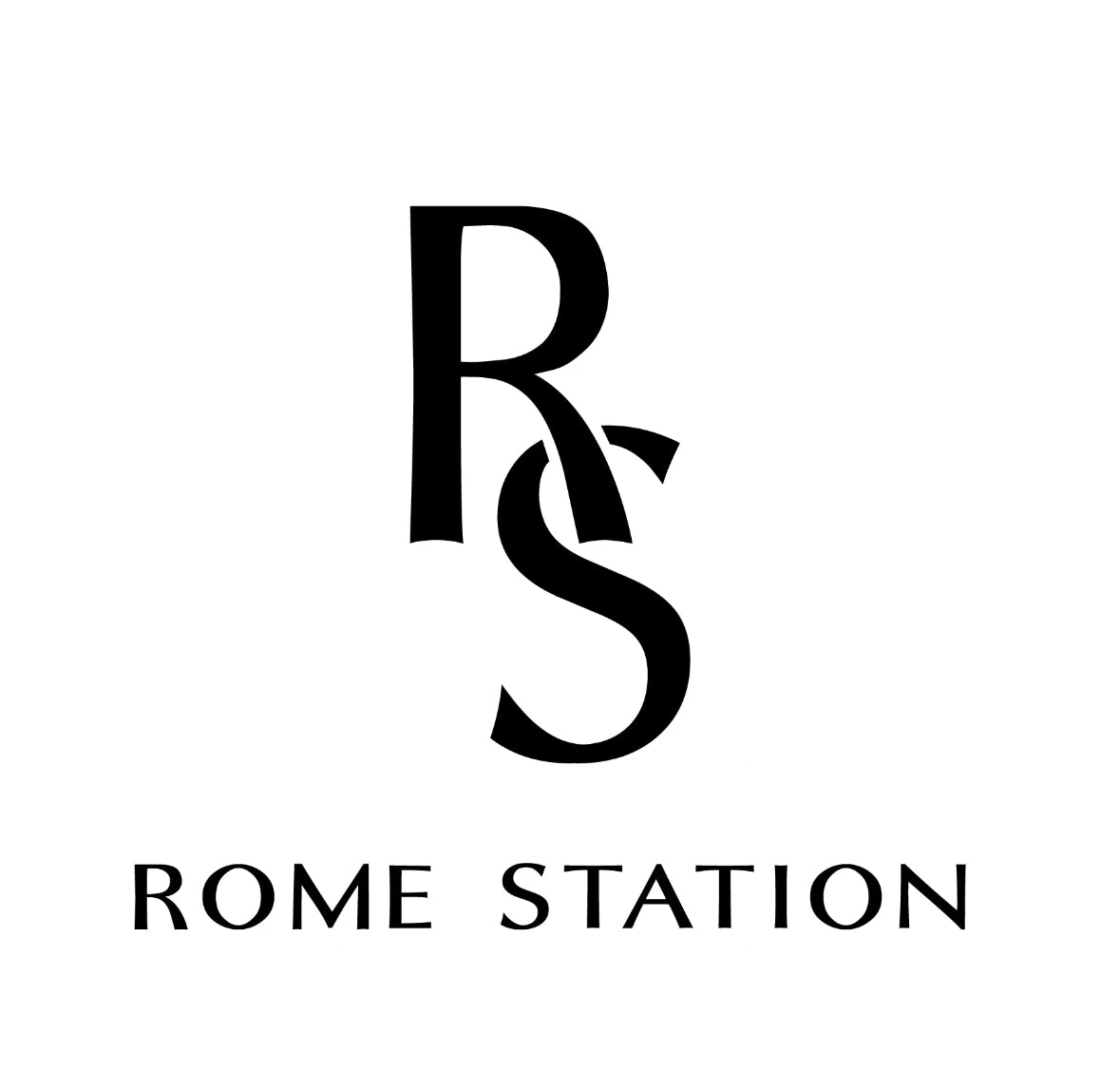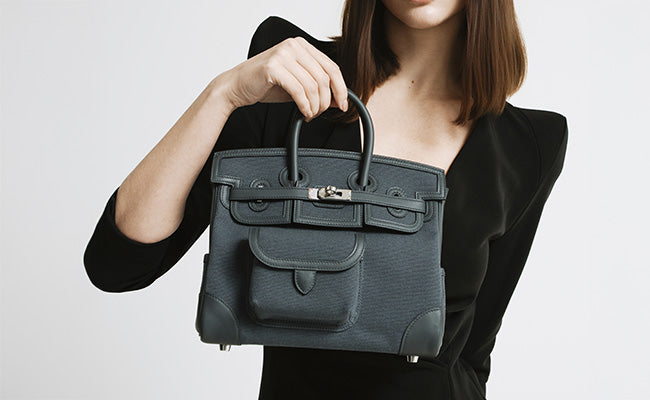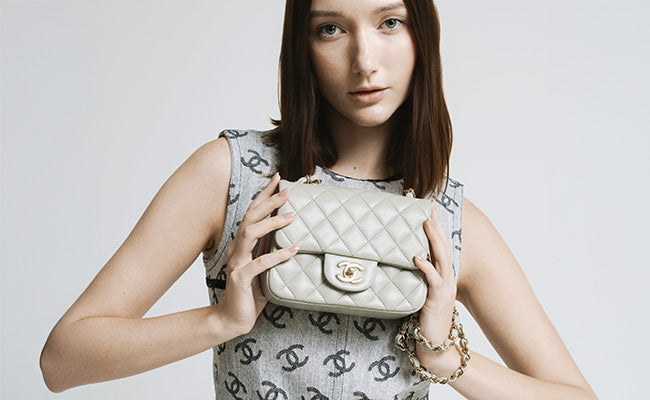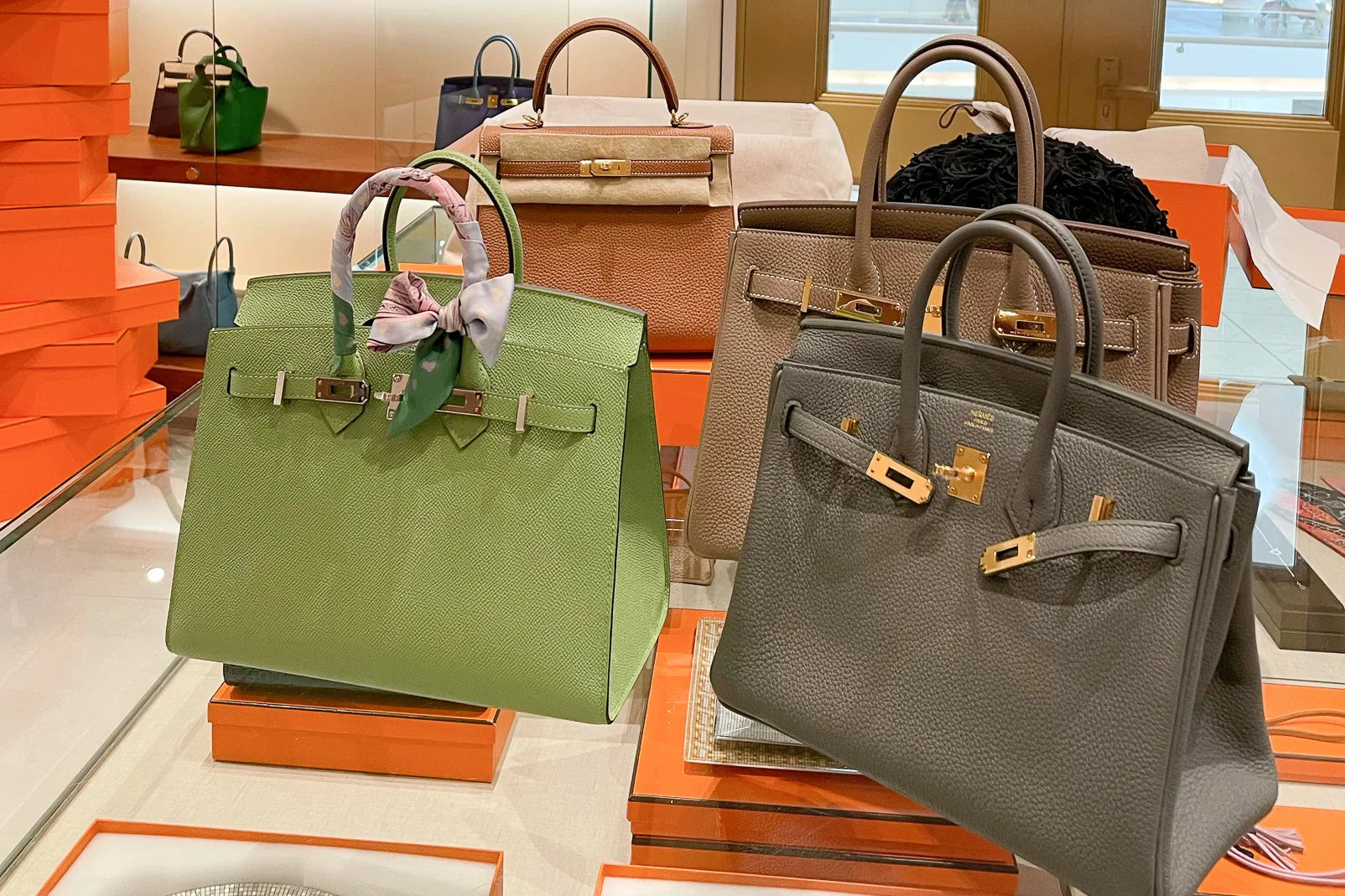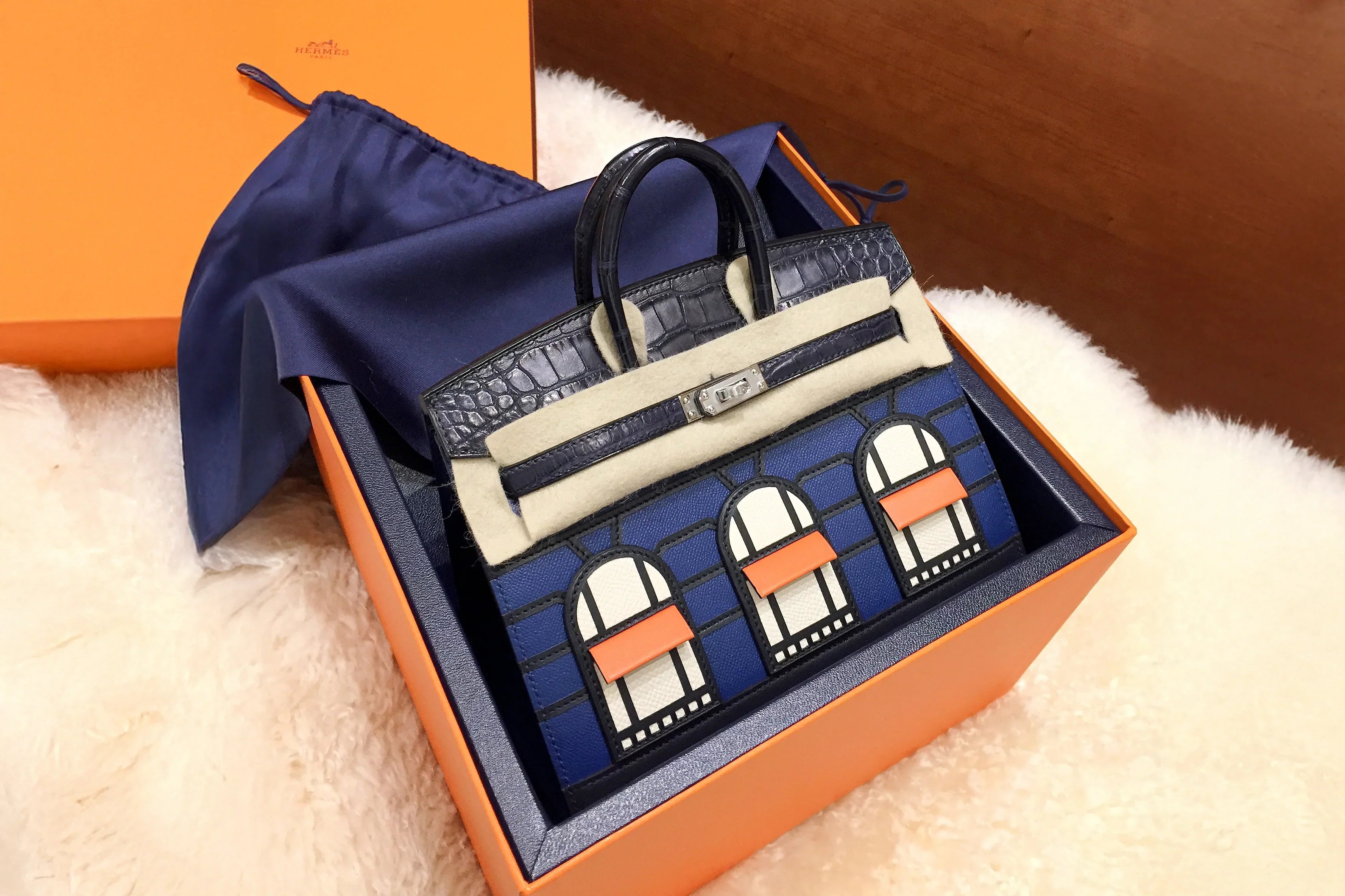
Faubourg Birkin: Anatomy of the “Mini‑Boutique” Grail
Check out our Hermès collection and Birkin bags!
The Faubourg Birkin is one of Hermès’ most coveted creations, blending the classic Birkin shape with transparent materials and bold hardware. Collectors call it the “mini boutique” because of its see through, shop window look.
Its transparent construction and extreme scarcity make it perhaps the hardest Hermès bag to get your hands on. Only a handful are made each year. We’re talking about a bag that fetches six figures at auction and has waitlists that feel endless.
But there’s more to it than rarity. The skill needed to craft a transparent leather and PVC Birkin while keeping Hermès’ standards is just wild, and the styling options go far beyond most luxury handbags.
Key Takeaways
- The Faubourg Birkin uses transparent materials for a “window shopping” effect, earning its “mini boutique” nickname
- Authentic bags are ultra rare, with just a few made each year, so getting one through standard channels is nearly impossible
- The transparent design demands specialized craftsmanship but opens up unique styling possibilities
Defining the Faubourg Birkin
The Faubourg Birkin channels Hermès’ take on architectural elegance, sporting a “storefront” design inspired by boutique facades. This limited edition mixes premium exotic leathers with palladium hardware, landing it at the top of many collectors’ wish lists.
Origin and Inspiration
Hermès launched the Faubourg Birkin in 2019, diving into architectural themes. The bag draws from Parisian storefronts, especially those along Faubourg Saint Honoré.
Designers at Hermès poured over the proportions and details of luxury shop facades. They worked those ideas, shop windows, decorative trim, and sophisticated color palettes, into leather.
There’s a deep tie to Place Saint Honoré, where Hermès opened its first shop in 1880. That bit of history gives the Faubourg more meaning than just its looks.
Every Faubourg Birkin kind of bottles up the feel of window shopping in Paris’ fanciest neighborhoods. The front panel is like a mini storefront, right down to the “window” details.
The "Mini Boutique" Concept
The Faubourg’s front flap stands out with its window like design, echoing boutique storefronts. This detail really sets it apart from standard Birkins.
Those “windows” come from carefully placed leather panels in contrasting shades. They add depth and make the bag look like you’re peeking into a shop.
Getting this effect right takes serious skill. Every color block has to line up perfectly to keep the illusion going.
The sides carry on the boutique theme, hinting at building corners, and even the hardware is placed to reinforce the architectural vibe.
Honestly, it’s like carrying a little piece of Paris with you.
Craftsmanship and Materials
Faubourg Birkins use only exotic leathers, think crocodile, lizard, ostrich. These materials help explain the sky high price.
Building them is no joke. The color blocking is complex, and artisans have to match textures and keep edges sharp.
Palladium hardware is the norm, though you’ll see rare gold accented versions. The hardware sticks with the architectural feel, clean, geometric, unfussy.
Each bag takes about 25 to 30 hours to make. That’s longer than a standard Birkin, thanks to the tricky panel work and color matching.
Quality control is intense. Every transition between colors has to be flawless, and the leather grain needs to fit the architectural look.
Distinctive Features of the Faubourg Birkin
The Faubourg Birkin really stands out for its architectural design, rare color combos, sharp proportions, and deep Hermès heritage.
Architectural Details
This bag’s personality comes from its structured, geometric panels, just like a Paris storefront. Window like compartments with contrast stitching frame the design, often mixing up leather textures and colors for a patchwork effect.
Hardware sticks to Hermès’ signature palladium or gold. The reinforced corners echo building facades, and the iconic turn lock closure fits right in with the architecture.
Each one takes roughly 18 to 25 hours of handwork by a single artisan. The detailing demands a steady hand and a lot of patience.
Signature Colourways
You’ll mostly see Faubourg Birkins in carefully chosen colorways that match Hermès’ design DNA. Etoupe and gold is a classic, super sought after combo.
The bi color construction usually means a neutral base with accent panels. Favorites include:
- Etoupe with gold accents
- Black with white panels
- Craie with rose gold
- Bleu marine with orange pops
Sometimes Hermès drops limited seasonal colors, and those tend to vanish fast. Collectors snap them up in hours.
Color application is strict. Every panel has to look consistent and perfectly finished.
Iconic Silhouettes
The Faubourg keeps the classic Birkin shape but tweaks it with architectural touches. It’s usually found in 25cm and 30cm sizes, though there are rare 35cm versions floating around.
Those panels give the bag a chunkier look without actually making it bigger. The lines and geometry add depth and make it super photogenic.
The base stays true to the Birkin’s trapezoid shape, but the paneling breaks up the usual smooth leather, giving the bag visual zones.
Hermès Brand Heritage
This Birkin is a love letter to Hermès’ flagship at 24 Faubourg Saint Honoré in Paris. That address has been home since 1880, pretty central to the brand’s identity.
Only highly trained artisans get to make these. The architectural details call for advanced leatherwork, a skill passed down through generations.
Each Faubourg comes with all the classic Hermès hallmarks: hand stitched seams, top tier leather, and flawless finishing. It’s a showcase of decades of expertise.
Production stays tiny. Most boutiques get just a couple per year. That’s partly because they’re tough to make, but also because Hermès loves exclusivity.
Understanding Its Grail Status
The Faubourg Birkin’s grail status comes down to Hermès’ tiny production runs, fierce collector demand, and resale prices that regularly break six figures.
Production Rarity
Hermès makes fewer than 50 Faubourg Birkins a year, across all sizes and colors. Only specialized craftspeople tackle the hand painted storefront details.
There are just three sizes: 25cm, 30cm, and 35cm. The 25cm is the holy grail. It really shows off the façade artwork.
Annual Production Estimates:
- Size 25cm: 15 to 20 pieces
- Size 30cm: 10 to 15 pieces
- Size 35cm: 8 to 12 pieces
Each bag takes 25 to 30 hours to make, and the painting alone eats up 8 to 10 hours.
Hermès sticks to certain leathers for the Faubourg. Epsom and Togo are most common, with a few in Clemence.
Collector Demand
Faubourg Birkins fly off the auction block. They are featured regularly in luxury handbag sales at major auction houses.
Big names like Kylie Jenner and Kim Kardashian have been spotted with them, which only fuels demand.
It’s not just Hermès fans. Art collectors are into these too. The hand painted design walks the line between accessory and artwork.
Why people chase them:
- Celebrity attention
- Hard to find in stores
- Instagram ready looks
- Strong investment value
For many, the Faubourg is their “unicorn.” We hear about people waiting years, sometimes 3 to 5, just for a shot at buying one through their Hermès contact.
Market Value Trends
Retail starts around $35,000 CAD for the 25cm. On resale, bags often go for 150 to 300% more, depending on condition and color.
Recent auctions show prices keep climbing. One 25cm Faubourg fetched $87,000 CAD at a recent auction in March 2025.
Resale by size:
- 25cm: $80,000 to $120,000 CAD
- 30cm: $70,000 to $100,000 CAD
- 35cm: $65,000 to $90,000 CAD
Original colorways like Bleu Jean and Rose Jaipur often outprice newer ones.
Condition matters a lot. Paint wear or darkened handles can drop the value by 20 to 30% compared to mint pieces.
How To Spot an Authentic Faubourg Birkin
The Faubourg Birkin’s distinct build and luxe materials create telltale signs that fakes rarely nail. Let’s walk through the hardware, stamps, and packaging that separate real ones from even the best counterfeits.
Key Identifying Elements
The window like cutout on the front panel is the big giveaway. On real bags, edges are laser cut, smooth, no fraying.
The metal frame around the cutout should line up exactly with the leather. If it’s off by even a millimeter, you’ll spot gaps or overlaps, a common fake giveaway.
Hardware:
- Palladium or gold, with even color
- “HERMÈS PARIS” engraving is sharp and spaced right
- Lock turns smoothly, no sticking
The inside leather panel, visible through the cutout, contrasts in color and sits flat, no bubbling or warping.
Stitching is a dead giveaway. On authentic bags, every saddle stitch is even, about 3.5 to 4mm apart.
Serial Numbers and Stamps
Hermès date stamps are standard but worth checking closely because of the bag’s complexity. You’ll usually find the stamp on the left inside panel.
A real stamp has even depth and crisp lines. The artisan’s letter should be sharp, not smudged.
Stamp locations:
- 2019 to 2021: Left interior, 2cm from top
- 2022 present: Slightly lower, due to construction tweaks
Hardware serials should match the bag’s production year. If you can, cross check with Hermès’ databases.
Run your finger over the blind stamp. It should feel a bit raised. Fakes often get this wrong, making it too shallow or too deep.
Packaging and Accessories
Genuine Faubourg Birkins arrive in special packaging. The orange box has reinforced corners and feels sturdy.
The dust bag is thick and substantial, not flimsy. Hermès uses a unique orange toned fabric, with the logo exactly 5cm from the bottom.
What’s in the box:
- Two keys with a leather fob
- Padlock with a matching serial
- Care booklet (multiple languages)
- Clear raincoat cover
Authentication cards for Faubourg bags have micro printing and watermarks. The card stock feels dense and high quality.
Counterfeiters often cheap out here. Boxes are flimsier, dust bags feel off, and details are sloppy.
Styling and Collecting the Mini Boutique
Styling the Faubourg Birkin Mini Boutique takes a little thought, and proper care helps keep its value sky high. Celebrity sightings have boosted its status, but maintenance is key for longevity.
Fashion Pairing Tips
In our experience, the Mini Boutique works best as the star of your outfit. Solid, neutral colors, cream, black, navy, camel, let the bag’s details stand out.
It pairs nicely with tailored looks: crisp blazers, pencil skirts, well cut trousers. We steer clear of super casual outfits that clash with the bag’s structure.
Day looks:
- Silk blouse with straight trousers
- Cashmere sweater and midi skirt
- Tailored coats for in between seasons
For evening, go for luxe fabrics: silk dresses, satin tops, upscale knits. Clean lines echo the bag’s geometry.
Match your metals. If your bag has palladium hardware, stick to silver jewelry. Gold hardware? Warm metals all the way.
Famous Owners
Plenty of high profile collectors have a Mini Boutique, but Hermès fans tend to keep things low key. You’ll hear about sightings among European socialites and tech insiders, but rarely see them splashed all over tabloids.
The bag started popping up in fashion circles in 2019, especially among those who love a good architectural reference.
Where they show up:
- Private Hermès events
- Charity galas in Paris and New York
- Swanky art gallery openings
Unlike other Hermès bags, the Mini Boutique keeps its mystique by staying out of the spotlight. That low profile? It only makes collectors want it more.
Care and Maintenance
Store your bag in a dust bag, tucked away somewhere cool and dry, definitely not in direct sunlight. I usually stuff the inside with acid free tissue to keep its shape when it’s not in use. It’s a simple step, but it helps.
Cleaning routine:
- Give it a gentle dusting once a week with a soft, dry cloth.
- If you spill something, blot right away, do not rub.
- Skip water or any cleaning products on the leather. Trust me, it’s not worth the risk.
If you want the full pampering experience, Hermès boutiques offer spa treatments for about $400 to 600 CAD a year. They’ll deep clean, condition, and polish the hardware.
Be gentle with that quirky little house shaped clasp. Open and close it with care, just a light touch does the trick. Forcing it can mess up those tiny, intricate parts.
Access and Acquisition Challenges
Getting your hands on a Faubourg Birkin? That’s a whole different ballgame. Even compared to the regular Birkin chase, this one’s tougher. There are barely any opportunities, no real waitlists, and the financial commitment? It’s way more than just the sticker price.
Paths to Ownership
There are basically three ways to land a Faubourg Birkin, and none of them are easy.
Direct boutique purchase is the dream, but it’s not as simple as walking in and asking. You need to have built a serious relationship with Hermès, think years, maybe decades. Your sales associate has to offer it to you; you can’t just request one.
Most collectors get there by buying lots of other Hermès pieces, leather goods, scarves, accessories. The typical Faubourg owner? Someone who’s already bought multiple Birkins and Kellys over the years.
Auction houses sometimes have Faubourg Birkins. These come with proper paperwork and authentication, which is a relief.
Prices at auction? They’re all over the map, anywhere from $80,000 to $150,000+, depending on size, color, and condition.
Authorized resellers and consignment shops are another route, but you’ve got to be extra careful. There are fakes out there, so double or triple check authenticity.
Even with reputable dealers, you might end up on another waitlist, maybe even putting down a deposit just to hold your spot for the next one.
Navigating Waitlists
Forget the usual Hermès waitlist routine. Faubourg Birkins don’t work that way.
Most boutiques don’t keep official lists for this model. Instead, sales associates keep mental tabs on their top clients who might be a good fit.
If you want to up your odds, try building relationships with staff at multiple locations. Regular visits, steady purchases, and genuine interest in the brand all help.
It’s smart not to mention the Faubourg by name when you’re just starting out with Hermès. If you come off as only interested in a quick investment, that can backfire.
Timing is huge. New releases usually drop during certain seasons, often lining up with major fashion weeks or anniversaries.
Some collectors say they’ve had luck by just expressing interest in “special edition” or “unique” pieces, rather than naming names.
Investment Considerations
Owning a Faubourg Birkin? You’re looking at a big investment. Retail starts around $50,000 CAD, but that’s just the beginning.
Immediate costs stack up fast: resale premiums, authentication, insurance, storage. Realistically, you should budget 20 to 30% over the purchase price for all the extras.
Long term value is strong. Well kept Faubourgs have gone up about 15 to 20% a year over the last decade.
Because the crocodile leather and hardware are delicate, you’ll want to keep them in top shape. Professional cleaning and conditioning can run $500 to 800 a year.
Selling one isn’t as simple as dropping it off at a consignment shop. You’ll need to use specialized channels, and even then, patience is key.
The market’s small but intense. The right buyer will show up eventually, but timing the sale takes a bit of nerve.
Frequently Asked Questions
The Faubourg Birkin always sparks questions, about its boutique inspired design, what’s behind the price, the wild craftsmanship, and the collector craze every time a new one drops.
What's the secret behind the buzz of the 'Mini Boutique' moniker for this Hermès icon?
People call it the “Mini Boutique” because the front looks just like the famous Hermès flagship at 24 Faubourg Saint Honoré in Paris. You get tiny storefront windows, miniature goods on display, shutters, all those little architectural touches.
It’s like wearing a piece of Hermès history on your arm. The amount of detail that goes into recreating those storefront features on leather? Honestly, that’s why collectors go nuts for it.
How does the exclusivity of a Faubourg Birkin elevate its status in the luxury market?
Hermès makes very few Faubourg Birkins, sometimes fewer than 100 per color worldwide. That level of rarity cranks up the demand among collectors who know just how exclusive it is.
Most people, even loyal Hermès clients, never get the chance to buy one, no matter how much they spend.
On the secondary market, prices often hit three or four times retail. Limited supply plus high demand? It’s a recipe for a rapidly appreciating luxury asset.
Can you give us a rundown on the craftsmanship that goes into each Faubourg Birkin?
Only a handful of specialized artisans work on Faubourg Birkins. The windows use leather appliqué, which takes serious skill and precision.
The shutters actually open and close, so there’s extra metalwork involved. Inside the windows, you’ll find tiny leather goods, each made by hand.
Coordinating all those colors and leather types isn’t easy. Standard Birkins just don’t have these technical hurdles. It takes way more time to finish each one because of all the decorative details.
Why do collectors and fashionistas alike seem to lose their minds over a new Faubourg release?
The Faubourg Birkin is like the ultimate flex. Hermès craftsmanship at its peak, but still a functional bag. Every release brings new colorways that won’t come back.
Social media goes wild whenever a new one appears. The storefront design looks amazing in photos, so it’s perfect for racking up likes and shares.
And let’s be honest, the investment angle doesn’t hurt. For a lot of collectors, a Faubourg is both a treasure and a smart addition to their portfolio.
What's the deal with the price tag of a Faubourg Birkin, how's it justified, eh?
Retail starts at around CAD $50,000 and can go past $70,000, depending on the size and materials. That price covers the extra 40 to 60 hours of specialized work each bag needs.
Hermès uses unique tools and techniques just for this model, which bumps up production costs. Since they make so few, there’s no bulk discount.
On the resale market, pristine Faubourgs can hit CAD $150,000 to $200,000. With that kind of appreciation, collectors who buy at retail don’t really have to justify much.
How do you spot the difference between a usual Birkin and the elusive Faubourg version? Are there tell tale signs?
Right away, the storefront façade jumps out. It’s plastered across the front of the bag. Those tiny window frames, shutters, and little boutique style details? That’s your first clue.
You’ll also notice the hardware. It tends to show off unusual finishes or colors, picked to match the storefront vibe. The leather’s another giveaway: Faubourg Birkins mix several colors and textures, while the regular ones usually stick to just one.
Sometimes, you’ll spot special interior stamps marking it as a Faubourg. And honestly, the whole look just stands out. Even in a crowd of Birkins, this one’s got a lot more going on.
